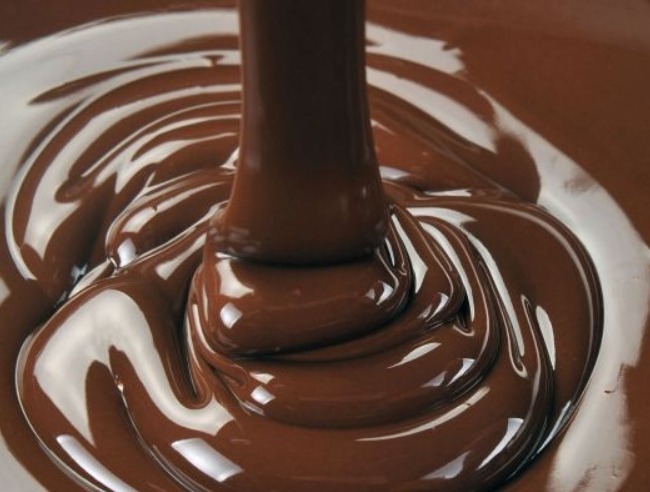Tempering chocolate is an essential step for making smooth, glossy, evenly colored coating for your dipped chocolates. Tempering prevents the dull grayish color and waxy texture that happens when the cocoa fat separates out. Tempered chocolate produces a crisp, satisfying snap when you bite into it. (You do not need to temper chocolate that you bake with, such as when you make brownies.) The tempering process takes chocolate through a temperature curve, a process which aligns the chocolate’s crystals to make it smooth, silky, and glossy.
Your chocolate shouldn’t have any added wax, just cocoa butter and solids, and sugar. The easiest chocolate to temper has additional cocoa butter added, it’s a special kind of chocolate — called couverture in French — that’s made for tempering and dipping. Don’t use already manufactured chocolate bars as those are already a finished product and are ready to be eaten.
If chocolate is incorrectly stored and exposed to a wide range of temperatures, the cocoa fat will separate out from the rest of the chocolate, creating a dull grey coating and roughish texture. If you find that you’ve let your chocolate bloom, you can still use it but you will need to bring it into temper again by ‘seeding’ it with an already tempered chocolate (more on that later). If you receive bloomed chocolate from a manufacturer, Alexandra recommends returning it because it means that the chocolate wasn’t properly cared for.
Bloom should not be confused with the normal scuffs and nicks chocolate can get when transported. The chocolate pictured above has not bloomed.
The basic idea is that you add tempered chocolate to melted, untempered chocolate. The tempered chocolate will introduce (or seed) the proper crystalline structure to the overall batch and bring everything into temper.
About 2/3 of the chocolate is melted and removed from the heat. The remaining 1/3 is dropped into the melted chocolate and slowly stirred until it melts and cools slightly. Note: The final 1/3 needs to be tempered chocolate that has not bloomed.
To Find Out All The Yummy Ingredients And The Step By Step Directions To Follow for this Delicious recipes,Go to the next page.
ingredients:
At least 1 lb (16 ounces) dark, milk, or white chocolate
directions:
Finely chop chocolate if in bar/slab form (about the size of almonds).
Place ⅔ of the chocolate in a heatproof bowl
Set aside ⅓ of the chocolate pieces (again, these are your seeds)
Place bowl over a saucepan of simmering water (once again, make sure the bowl does not touch the water)
Using a rubber spatula, gently stir the chocolate so that it melts evenly. Place candy thermometer in melting chocolate.
Once it’s melted, keep an eye on the thermometer. As soon as it reaches between 115°F-120°F, remove from heat. Milk and white chocolate need to reach a temperature between 110°F-115°F.
Add small amounts of the reserved ⅓ of chocolate (seeds) at a time, stirring to melt before adding more seeds.
Continue to add small additions of chocolate (seeds) until you’ve brought the chocolate down to 82°F (78°F for milk or white chocolate) (You can bring the chocolate down to 88°F -91°F for dark chocolate or 84°F to 87°F for milk or white chocolate, the working temperatures – and stop there. Your chocolate is now in temper. However, I prefer bringing it below temper then back up to temper. I find it gives you a more fluid chocolate)
Put it back on the double boiler and bring the temperature back up until the chocolate reaches its working temperature; 88°F – 91°F. Milk and white chocolate needs to be between 84°F-87°F.
If you still have a few unmelted bits of chocolate, put the bowl back over the simmering water, stirring gently and watching the thermometer constantly, or, as mentioned above, smooth out the unmelted chocolate bits with an immersion blender.
IMPORTANT: You really need to keep an eye on the temperature so that it doesn’t go over its working temperature. Oh, and you should be using a chocolate or instant read thermometer. It has to be a thermometer that goes below 100°F and your basic candy thermometer does not.
To test if the chocolate is in temper; spread a little chocolate on a piece of parchment paper and place in the refrigerator for a few minutes to quickly cool it. When the chocolate appears to have a slight shine and is set, remove from the parchment paper and snap in half. The chocolate should break cleanly and should not melt when touched.
Your chocolate is now tempered and ready to use.
